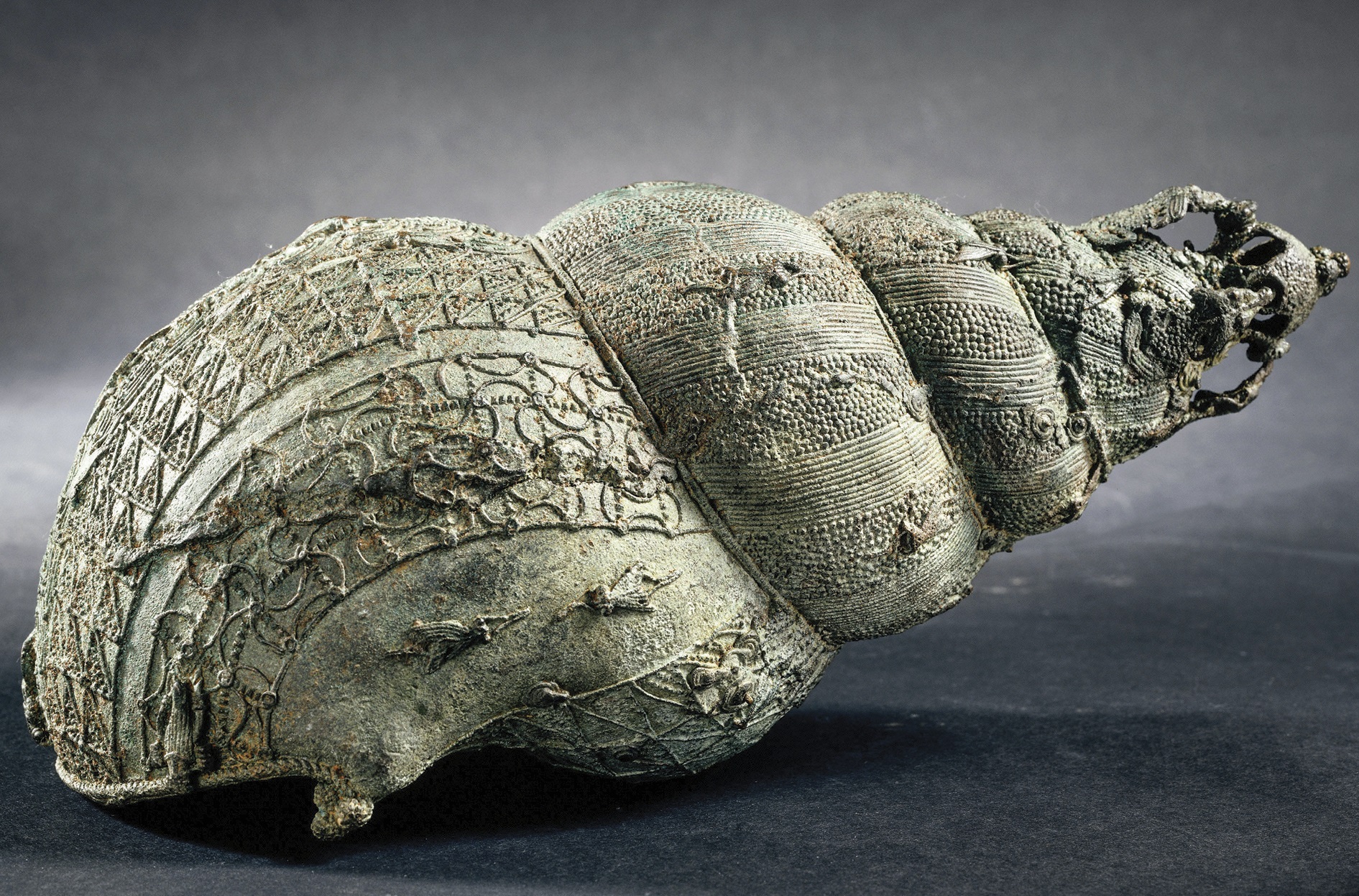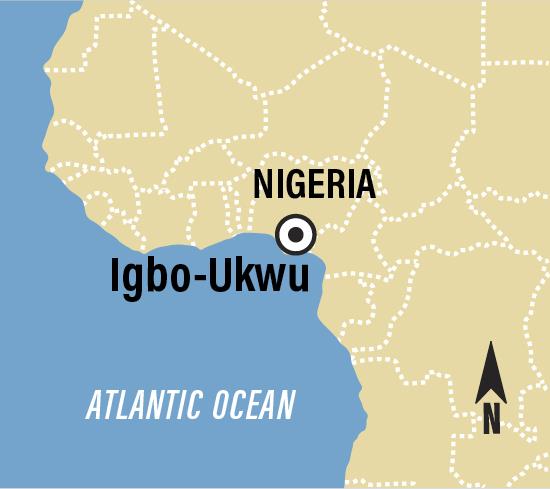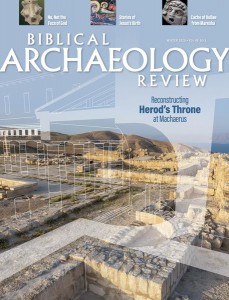
Cast from bronze in the ninth century C.E. and measuring a foot long, this triton shell was forged by some of the earliest metal workers in West Africa. The body of the shell surface is decorated with a network of parallel lines and crosshatchings with relief sculptures of crickets and flies scattered throughout. The pointed end of the shell is adorned with four frogs being swallowed by four snake heads.

The species that this shell represents lives in the sea, about 100 miles from Igbo-Ukwu, the shell’s find spot. Archaeologists wonder if the sea, and thus the triton shell, was important for trade or for ritual reasons. Found among other bronzes in a storehouse at Igbo-Ukwu, the artifact may have been part of the burial furnishings of an important person, perhaps even a priest-king.
This excellent example of West African bronze craftsmanship can be found at the National Museum in Lagos, Nigeria.
Already a library member? Log in here.
Institution user? Log in with your IP address.

